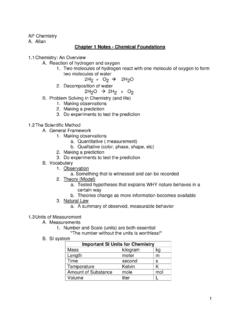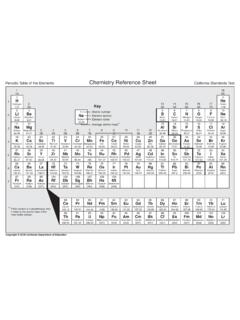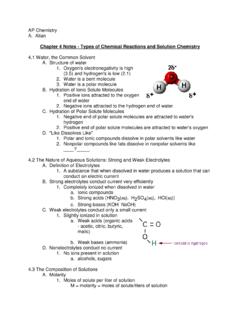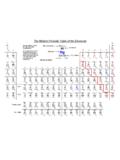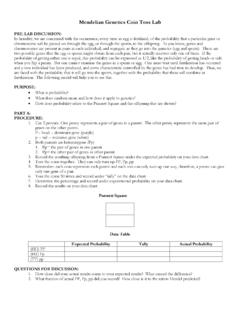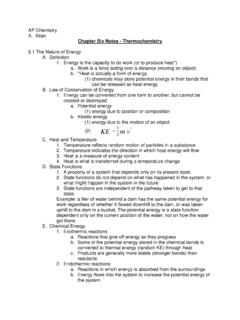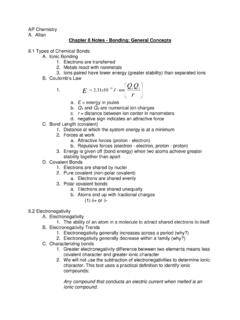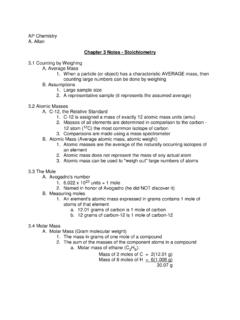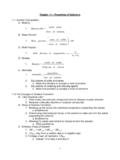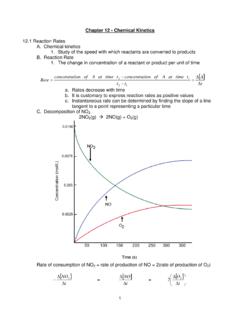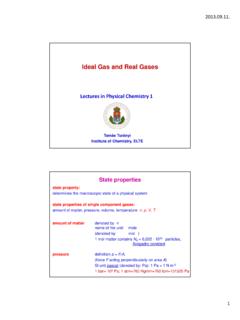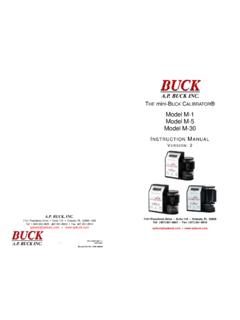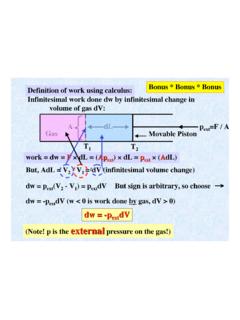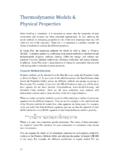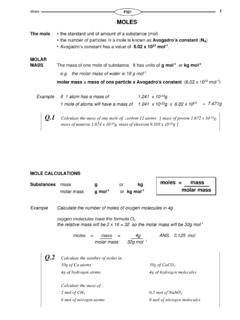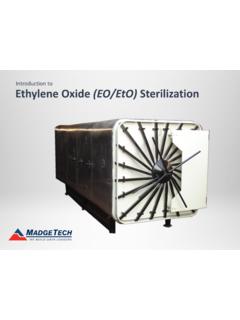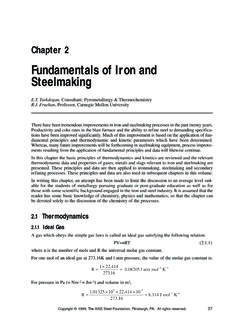Transcription of AP Chemistry A. Allan Chapter 5 - Gases - …
1 AP Chemistry A. Allan Chapter 5 - Gases Pressure A. Properties of Gases 1. Gases uniformly fill any container 2. Gases are easily compressed 3. Gases mix completely with any other gas 4. Gases exert pressure on their surroundings a. Pressure = force/area B. Measuring barometric pressure 1. The barometer a. Inventor - Evangelista Torricelli (1643) 2. Units a. mm Hg (torr) (1) 760 torr = Standard pressure b. newtons/meter2 = pascal (Pa) (1) 101,325 Pa = Standard pressure c. atmospheres (1) 1 atmosphere = Standard pressure The Gas Laws of Boyle, Charles, and Avogadro A.
2 Boyle's Law (Robert Boyle, 1627 - 1691) 1. the product of pressure times volume is a constant, provided the temperature remains the same kPV= a. P is inversely related to V b. The graph of P versus V is hyperbolic c. Volume increases linearly as the pressure decreases (1/P) 2. At constant temperature, Boyle's law can be used to find a new volumes or a new pressure a. P1V1 = k = P2V2 VPVP2211= or VVPP1221= 3. Boyle's law works best at low pressures 4. Gases that obey Boyle's law are called Ideal Gases B.
3 Charles' Law (Jacques Charles, 1746 - 1823) 1. The volume of a gas increase linearly with temperature provided the pressure remains constant a. V = bT V/T = b (1) V1/T1 = b = V2/T2 TVTV2211= or TTVV2121= b. Temperature must be measured in degrees Kelvin (1) K = C + 273 (2) 0 K is "absolute zero" C. Avogadro's Law (Amedeo Avogadro, 1811) 1. For a gas at constant temperature and pressure, the volume is directly proportional to the number of moles, n a. V = an V/n = a (1) V1/n1 = a = V2/n2 nVnV2211= The Ideal Gas Law A.
4 Derivation from existing laws 1. V = k/P V = bT V = an 2. Constants k, b, a are combined into universal gas constant, R PnRTV= or nRTPV= molKatmLR = B. Limitations of the Ideal Gas Law 1. Works well at low pressures and high temperatures 2. Most Gases do not behave ideally above 1 atm pressure 3. Does not work well near the condensation conditions of a gas C. Solving for new volumes, temp or pressure (n remaining constant) 1. Combined law (from general chem) 2.
5 TVPRnTVP222111== or TVPTVP222111= =TTPPVV122112 ( )( )( ) =PTnabkV Gas Stiochiometry A. Standard temperature and pressure (STP) 1. 0 C, 273 K 2. 760 torr, 1 atm B. Molar volume 1. One mole of an ideal gas occupies liters of volume at STP C. Things to remember volumemassDensity= massmolarcesubsofgramsntan= Dalton's Law of Partial Pressures (John Dalton, 1803) A. Statement of law 1. "For a mixture of Gases in a container, the total pressure exerted is the sum of the pressures each gas would exert if it were alone" 2.
6 It is the total number of moles of particles that is important, not the identity or composition of the gas particles B. Derivation 1..321+++=PPPPTOTAL 2. VTRnP11= VTRnP22= VTRnP33= .. 3. =PTOTALVTRn1+ VTRn2 +VTRn3 4. () +++= 5. =VTRnPTOTALTOTAL C. Mole Fraction 1. The ratio of the number of moles of a given component in a mixture to the total number of moles in the mixture 2. For an ideal gas, the mole fraction (x): PPnnxTOTALTOTAL111== The Kinetic Molecular Theory of Gases (KMT) A.
7 Postulates of the KMT Related to Ideal Gases 1. The particles are so small compared with the distances between them that the volume of the individual particles can be assumed to be zero 2. The particles are in constant motion. Collisions of the particles with the walls of the container cause pressure 3. Assume that the particles exert no forces on each other. 4. The average kinetic energy of a collection of gas particles is assumed to be directly proportional to the Kelvin temperature of the gas B.
8 Explaining Observed Behavior with KMT 1. P and V (T = constant) a. As V is decreased, P increases: V decrease causes a decrease in the surface area. Since P is force/area, the decrease in V causes the area to decrease, increasing the P 2. P and T (V = constant) a. As T increase, P increases The increase in T causes an increase in average kinetic energy. Molecules moving faster collide with the walls of the container more frequently, and with greater force 3. V and T (P = constant) a. As T increases, V also increases Increased T creates more frequent, more forceful collisions.
9 V must increase proportionally to increase the surface area, and maintain P 4. V and n (T and P constant) a. As n increases, V must increase Increasing the number of particles increases the number of collisions. This can be balanced by an increase in V to maintain constant P 5. Dalton's law of partial pressures a. P is independent of the type of gas molecule KMT states that particles are independent, and V is assumed to be zero. The identity of the molecule is therefore unimportant C. Root Mean Square Velocity 1.
10 Velocity of a gas is dependent on mass and temperature. 2. Velocity of Gases is determined as an average a. M = mass of one mole of gas particles in kg b. R = J/K mol (1) joule = kg m2/s2 MTRurms3= D. Mean Free Path 1. Average distance a molecule travels between collisions a. 1 x 10-7 m for O2 at STP Effusion and Diffusion A. Effusion 1. Movement of a gas through a small opening into an evacuated container (vacuum) 2. Graham's law of effusion 21gasforeffusionofRategasforeffusionofRa teMM12= B.
